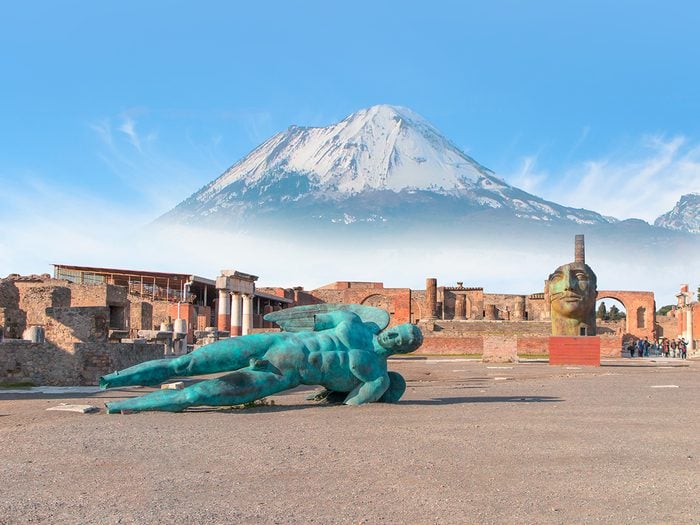
Pompeii, Italy
For more than 1,500 years, the exact location of the Roman city of Pompeii was unknown. In 79 AD, Mount Vesuvius erupted, covering the city—which is just a few kilometres from present-day Naples—in over four metres of ash and pumice. After extensive excavation by experts over the years, the city, once home to over 20,000 residents, has been recovered. Although the site is now deserted, its complex design and grand structures, perfectly preserved by the ash, make it an extraordinary site to see.
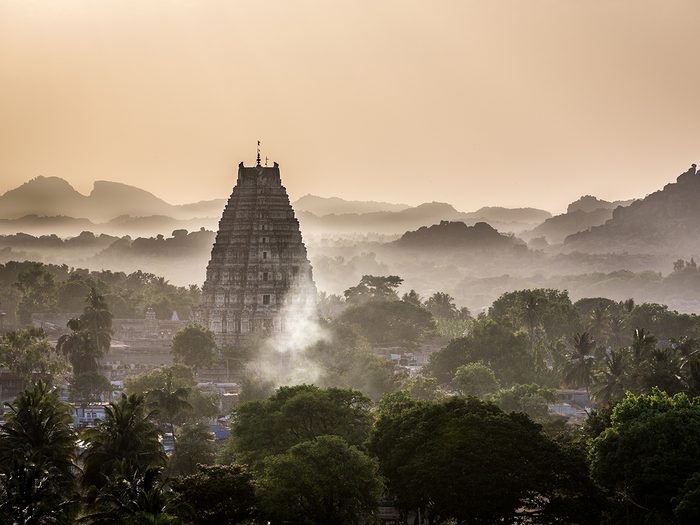
Vijayanagara, India
If you’ve never heard of the lost city of Vijayanagara, India, you wouldn’t be the only one. Though this once-booming city is still revered by Hindus, most of the world has no idea it ever existed. What was an urban centre from the 14th to the 16th centuries is now a historical site bursting at the seams with beauty, detailed craftsmanship, and magnificent structures, still standing without any remodelling or supports. This most holy place was once the centre of the greatest empire in Southern India, and the ruins left behind are as remarkable as the city itself once was.
Here’s expert advice for Canadians travelling to India for the first time.
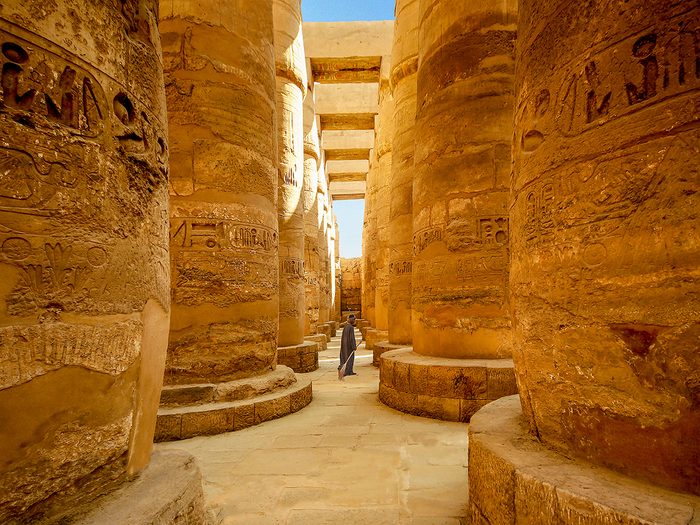
Thebes, Egypt
There are few places in the world, if any, that can compare to the majestic beauty of Thebes. Known to locals at the time as Waset, Thebes is located within the modern-day city of Luxor and was once the capital of Egypt, as well as the largest city in the world with over 40,000 inhabitants. The tomb of King Tut and the Karnak temple are just a couple of the astonishing architectural beauties of this lost city.
Here are 15 history questions everyone gets wrong.
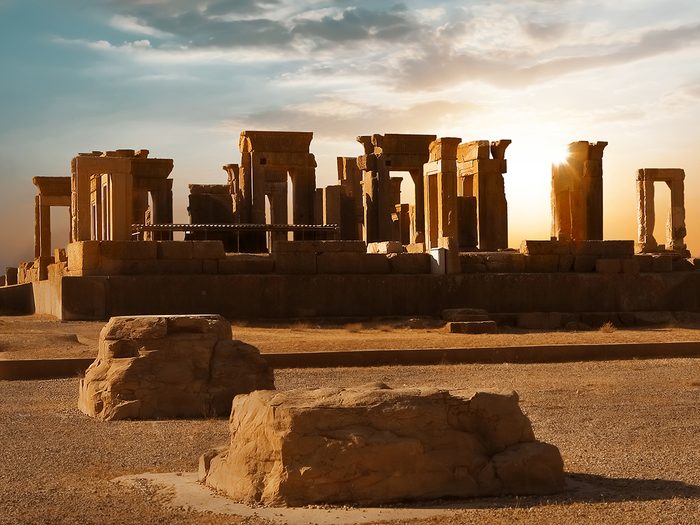
Persepolis, Iran
The ruins of the city of Persepolis, which date back to 515 BC, are renowned for their intricate detail work. Carvings of noblemen, slaves, and officials of the Persian Empire can still be seen carved into the stone.
Check out more ancient architecture that boggles the mind.

Petra, Jordan
The ancient city of Petra, meaning “rock” in Greek, was chosen by Smithsonian Magazine as one of the “28 Cities to See Before You Die,” and for good reason. Until 1812, the Western world had no knowledge of Petra whatsoever, and today it has been declared a UNESCO World Heritage Site. (Check out all 20 UNESCO World Heritage Sites in Canada.) Petra may have been settled as far back as 312 BC, through to the fourth century, when it fell under the rule of the Roman Empire. Previously, it was a hub for silk trading. When the Roman Empire took over, the city’s population began to decline until it eventually became deserted and forgotten by most of the world. What makes Petra such an amazing city to see is the ornate décor, hand-carved directly into the rock that makes up each structure within the city.
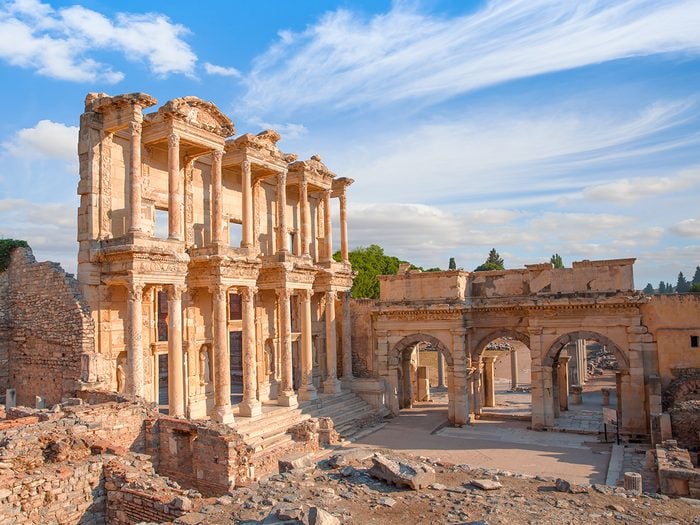
Ephesus, Turkey
What is today an abandoned city of ruins was once the powerful and beautiful Greek city of Ephesus. Located in present-day Turkey, this lost city is home to the Temple of Artemis, one of the Seven Wonders of the Ancient World. Perhaps most striking is the Library of Celsus, a lavish piece of architecture, which still stands in all its glory today.
Explore more unique architecture from around the world.

Angkor, Cambodia
What used to be the largest preindustrial city in the world (between 802 AD and 1431 AD) has now become one of the most captivating abandoned cities of all-time. The location is filled with temples, like Angkor Wat, which has been named the largest religious monument on Earth. The remains of a once powerful city, ruled by the Khmer Empire, are magnificent. The intricate and elaborate details of the temples are still visible today.
Here are 10 places to see before they disappear.
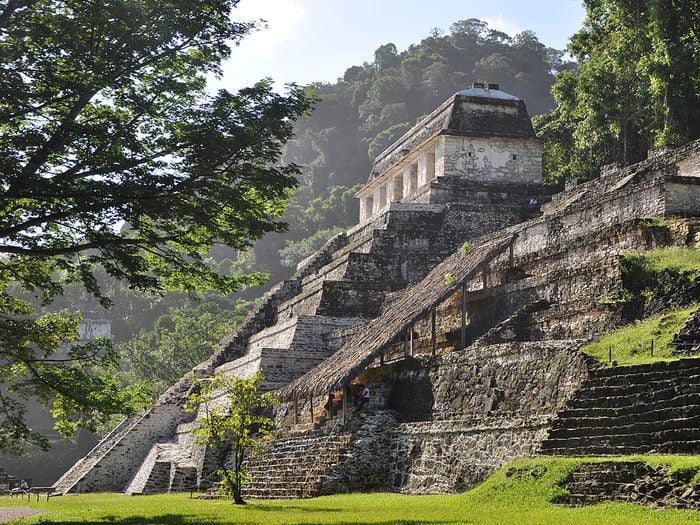
Palenque, Mexico
This ancient city is presumed to have been built around 226 BC and to have remained inhabited until about 799 AD. Towards the end of its life span, Palenque was inhabited by a mostly agricultural population, and when farming became no longer feasible on the grounds, the city was slowly abandoned. It was eventually overtaken by forest and completely covered. The city’s stone-carved tablets, which tell the tale of its rulers over centuries, were also hidden until the city was discovered, cleaned and restored. Though uninhabited today, the ancient city of Palenque is a beautiful site, filled with rich history and incredible craftsmanship.
Explore the world’s most famous castles.
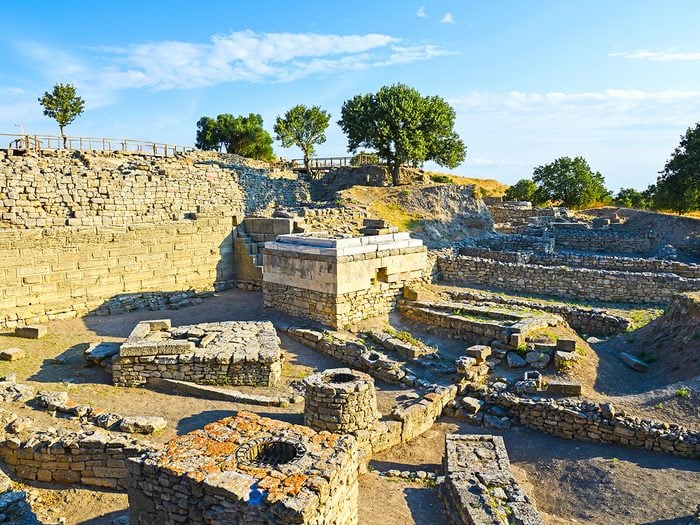
Troy, Turkey
The ancient city of Troy was said to have been destroyed and rebuilt several times, and each time, the new city was built upon the ruins of the previous. First founded in 3000 BC, Troy was immortalized by providing the setting for Homer’s Iliad, and the remarkably well-preserved ruins remain a popular tourist attraction in present-day Turkey.
Next, check out the most famous forgotten city of all, Machu Picchu.